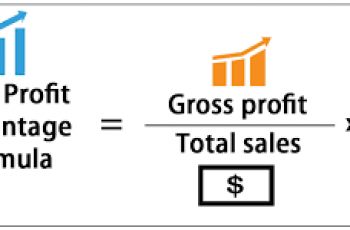What is Operating Profit?
To calculate operating profit also known as Earnings before interest and taxes(EBIT), we first need to know what operating profit is and when do we say that a firm is operating in profit.
Basically, we can define operating profit as an accounting statistic that is used to measure the profitability of a business, before taking into account interest and taxes.
This calculation is commonly used to determine a business’ profitability in terms of operations as well as a benchmark when comparing a company to similar companies in the same industry.
Operating profit lets you see how well your controlling costs and If it is negative, a business will likely require additional outside funding to remain in operation. While positive operating profit may express the overall health of a business, it does not guarantee future profitability.
EBIT does not necessarily equate to the cash flows generated by a business, since the accounting entries made under the accrual basis of accounting can result in operating profits being reported that are substantially different from cash flows.
Factors that Affect Operating Profit.
Although operating profit is a measure of managerial flexibility and competency, particularly during tough economic times. There are some factors that can affect it and they are;
- The pricing strategy of the business
- Prices for raw materials
- Labor costs
This is because these items directly relate to the day to day decisions that managers make.
Exclusions from the Operating Profit
Profit created through the sale of assets is not included in the operating profit figure, except for any items created for the explicit purpose of being sold as part of the core business. In addition, interest earned from cash such as checking or money market accounts is not included.
Operating income does not include investment income generated through a partial stake in another company, even if the investment income is tied directly to the core business operations of the second company.
EBIT does not account for any debt obligations that must be met. This is the case even if those obligations are directly tied to the company’s ability to maintain normal business operations.
Formula to Calculate Operating Profit.
Operating Profit = Gross Profit – Operating Expense – Depreciation – Amortization
Gross profit can be calculated by subtracting the cost of goods sold (COGS) from revenue.
Operating expenses are essentially the costs to keep the business running. They include rent, inventory costs, marketing etc.
Depreciation is defined as a reduction in the value of an asset that occurs over time as the asset gets older or as wear and tear occurs.
Amortization is an accounting technique used to periodically lower the book value of a loan or intangible asset over a set period of time.
Example:
Calculate the operating profit of a firm if it recorded a gross profit of $ 100,000, the value of total operating expenses was $ 10,000 and the sum of the depreciation and amortization value of the assets was $ 15,000.
Operating Profit = Gross Profit – Operating Expense – Depreciation – Amortization
= 100,000 – 10,000 – 15,000
= 75,000
Therefore, the operating profit of the firm is $ 75,000.

